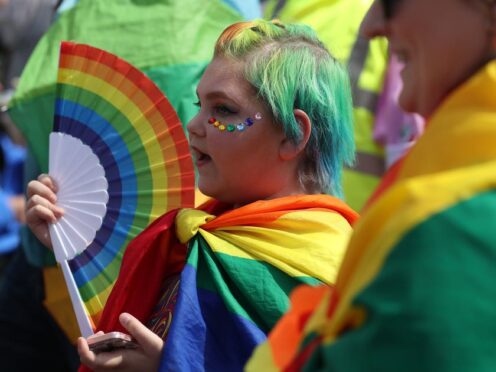Just under 184,000 Scots aged 16 and over identify as LGB+ while almost 20,000 identify as trans or have a trans history, according to newly-released Scottish census figures.
The 2022 Scottish census was the first to include voluntary questions about respondents’ sexuality and whether they identified as trans or had a trans history.
It found that 183,869 Scots, or 4% of the adult population, identified as LGB+ and 19,990, or 0.44% of the adult population, identified as trans or have a trans history.
LGB+ is an abbreviation used to refer to people who identify as lesbian, gay, bisexual, and other minority sexual orientations while trans is a term used to describe people whose gender is not the same as the sex they were assigned at birth.
A regional breakdown shows that the Dundee City Council area had the highest proportion of people identifying as trans or having a trans history (0.91%), followed by the City of Edinburgh and Glasgow City (both 0.77%).
Meanwhile, the City of Edinburgh had the highest proportion of people identifying as LGB+ (7.6%), with Glasgow City second (7.1%) and Dundee City third (6.6%).
Director of census statistics Jon Wroth-Smith said: “This is the first time Scotland’s Census has ever collected data on trans status or history and sexual orientation.
“We can now say that almost 20,000 people aged 16 and over in Scotland identified as being trans or having a trans history, and almost 184,000 people aged 16 and over identified as LGB+.
“These numbers will help charities, local authorities, businesses and government plan services to improve the lives of those living and working in Scotland as well as providing important information for effective equality monitoring.”
Of the 183,869 Scots who identified as LGB+, the census found that 80,260 (43.6%) identified as bisexual and 80,100 (43.6%) identified as gay or lesbian.
The results are also broken down by age group, with the results showing that of those who identified as bisexual, almost half (46.6%) were aged 16 to 24 and around a third (32%) were aged 25 to 34.
Of those who identified as gay or lesbian, 23.1% were aged 16 to 24, while a further 28.6% were aged 25 to 34, meaning that just under half were aged 35 and older.
Meanwhile, of the 19,990 Scots who identified as trans or have a trans history, 46.1% were aged between 16 and 24, and 26% were aged between 25 and 34, meaning that less than a third were aged 35 and older.
The voluntary question in the 2022 census about sexual orientation was: “Which of the following best describes your sexual orientation?”.
People were asked to tick “straight/heterosexual”, “gay or lesbian”, “bisexual” or “other sexual orientation”, with those who ticked the latter being asked to described their sexual orientation.
Meanwhile, the voluntary question about whether someone identified as trans or had a trans history was: “Do you consider yourself to be trans, or have a trans history?”.
People were asked to tick “no” or “yes”, with people who ticked “yes” being asked to describe their trans status (for example, non-binary, trans man, trans woman).
The publication of the data has been welcomed by the Equality Network, a Scottish LGBT+ equality and human rights organisation.
Erin Lux, Equality Network policy co-ordinator, said: “As a bisexual woman, I am thrilled to see my community represented in the census and recognition of the fact that we make up a large percentage of the LGBT+ community.
“Nearly one in three LGB+ people in Scotland are bisexual women. Ensuring good outcomes for Scotland’s LGBT+ community as a whole therefore requires that bi+ women’s health, safety and wellbeing needs are understood and met.”
Vic Valentine, manager of Scottish Trans, said the inclusion of the questions in the census showed a “positive shift in attitudes”.
“It’s great to see the results from the first-ever census to ask people in Scotland about their sexual orientation or whether or not they’re trans,” they said.
“In the past, it would have been hard to imagine it being acceptable to include these questions, so asking them at all shows the positive shift in attitudes towards LGBT+ people.”
These figures are the third of seven reports on different topics from the census to be released over the next few months.
Future topics include housing, education and health.
